The benefits of dancing can’t be overstated; it increases fitness, encourages creativity, fights depression and – most importantly – makes you smile! There’s plenty of ways to get dancing in Brighton.
Dance classes have become increasingly popular over the past few years with TV shows like Strictly Come Dancing contributing to an explosion of interest. Then, of course, there’s films like ‘Footlose‘, ‘Dirty Dancing‘, ‘Step Up‘, ‘Magic Mike‘ and ‘Mamma Mia!‘ that make us want to forget our woes, get up and simply dance! However, before you turn into the dancing queen, enjoy our guide to dancing in Brighton and discover which type of dance suits you best and last but not least, find the perfect dance school for your favourite style!
Zumba
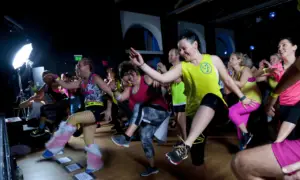
Where to dance:
Brighton Zumba (St. Paul’s Primary School) – Classes and Zumba birthday parties
Zumba is a fun fitness program that involves elements of both dance and aerobics. It was created by a Colombian dancer and choreographer named Alberto Perez during the 90s. A typical Zumba choreography can include hip-hop, soca, samba, salsa, merengue and mambo. All the different elements to make for a fun and effective workout. Zumba is the perfect way to workout and have a great time doing it!
Moves/Styles: Cha Cha, Merengue, Salsa, Hip-hop, Modern, Soca, Samba, Mambo, core exercises, squats, lunges
What to wear: workout clothes (shorts, athletics trousers, tank tops, sweat trousers,…), dance shoes or trainers
Capoeira
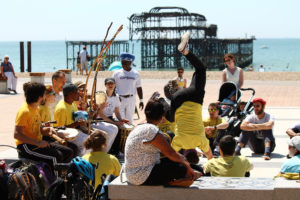
Where to dance:
Lets go to Capoeira – kids and adults, different levels, introductory course
Capoeira is a Brazilian art form using elements of fight, dance and rhythm. It’s considered conversation through movement between the players, coming from African slaves brought to Brazil in the 16th century as well as native Brazilian influences. Some historians are of the opinion that it was used as a way to hide self defence training. Today it’s the perfect exercise for anyone who wants to get active, develop leg strength, upper body strength, flexibility and even learn a bit of Brazilian Portuguese.
Moves: kicks, takedowns, hand and arm strikes, defensive moves
What to wear: black or dark trousers
Lindy Hop
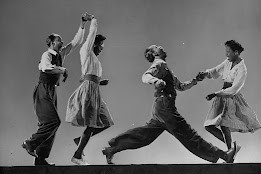
Where to dance:
Brighton Lindyhoppers – (intensive) beginner, improver, intermediate
Lindy Hop is one of the most famous swing jazz dances deeply rooted in America’s Jazz dance halls, going as far back as the 1920’s . It includes a lot of fancy footwork and improvisation, whilst also known for its musicality and personal styling. The Lindy Hop first emerged on the dance floors of New York and as it gained more and more popularity, with travelling dance troupes incorporating it into their routines. It’s now a staple of the Brighton dance scene with it’s own festival!
Moves: swingout (defining dance move), aerial (dance move where one’s foot leave the floor)
What to wear: shoes with a smooth sole
Tap
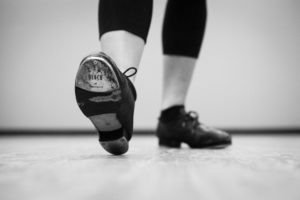
Where to dance:
Adult Dance Brighton – total beginners, beginners, intermediate, advanced, improvers
Silver Screen Dance – beginners and improvers
Dance Center – adults and juniors
Rox Dance Studio – total beginners, beginners
Taking America by storm in the 30’s thanks to the films of Ginger Rogers and Fred Astaire, it’s still one of the most highly regarded and respected forms of dance. In tap dance, the dancer wears shoes with a metal “tap” on the heel and toe which makes a percussive sound as it strikes the floor. There’s also a form called “Soft-Shoe” where rhythm is generated by the tapping of the feet and sliding of the feet.
Moves: stamp, stomp, brush, step, flap, shuffle, ball change, hop and leap
What to wear: tap dance shoes, simple workout wear, don’t wear long trousers
Cheerleading
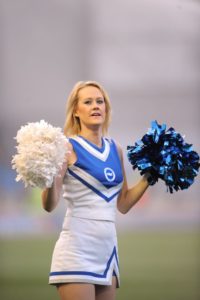
Where to dance:
Zodiac Allstars – Under 10, 10 – 13, 14 and over
Cheerleading is more than dancing, considered a sport by many, originating in the United States. The focus is on audience entertainment, team motivation and impressive collaborative routines. These routines usually consist of many different components such as dance, tumbling, cheers, stunts and jumps, with routines lasting one to three minutes. Cheerleaders train very hard to participate in competitions and feature at sports events to (as the name suggests) cheer on their team.
Moves: high V, low V, daggers, touchdown, stunts, jumps, cartwheel, forward roll, backbend
What to wear: cheerleading uniform, ribbon, bodysuit, crop top, skirt, shell
Ballet
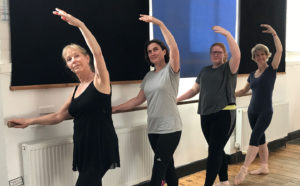
Where to dance:
Wendy Whatling School of Dance – beginners to advanced
Ballet is characterised by its highly precise set steps, gestures and grace. It’s also known for its pointe shoes, vocabulary based on French terminology and dancer’s flexibility and poise. Classical ballet originates from Renaissance Italy and developed into its concert dance form in France and Russia.
Moves: plie, relieve, sauté
What to wear: leotards, tights, warm ups
Jazz
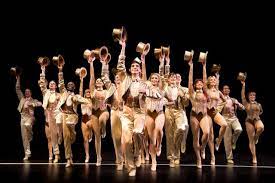
Where to dance:
Adult Dance Brighton – jazz dance, improvers
Silver Screen Dance – Beginners and experienced
Jazz is a very energetic and exciting style of dance which consists of unique moves, some fancy footwork, big leaps and quick turns. Taking inspiration from a unique blend of African dances, European classical dances and American Modern dances. In order to gain the grace and balance that it requires, top jazz dancers usually have a strong background in ballet. Jazz is actually considered the best dance to improve balance and consequently has low fall-related injuries.
Moves: jazz square, isolations, chassé, jazz layout, jazz walk, jazz hands, fosse
What to wear: dress comfortable, tights, dance shorts or any other specific dance clothes, tight top, jazz dance shoes
Hip Hop
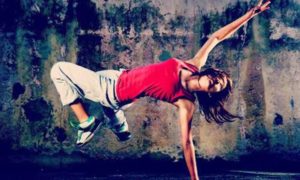
Where to dance:
Streetfunk – Adult and Kids Classes (Beginners, Intermediate, Advanced)
Hip-hop is a street dance which is mostly performed to hip-hop music gaining popularity through dance crews in the United States. It is a very creative and oft improvised style of dance, incorporating a wide range of street styles, set to the beats of pounding hip hop music. The basic moves are performed in time to a catchy beat, known as popping, locking and krumping. It is very expressive; defined by its bounding steps, hand-stands and power jumps. Hip Hop is practiced in both dance studios and outdoor spaces.
Moves: dougie, stanky leg, body pop, helicopter, moonwalk, shuffle, nae nae, pop, lock and drop
What to wear: loose-fitting athletic trousers, tank top, wear shoes that do not grip the floor too hard
Hoop Dance
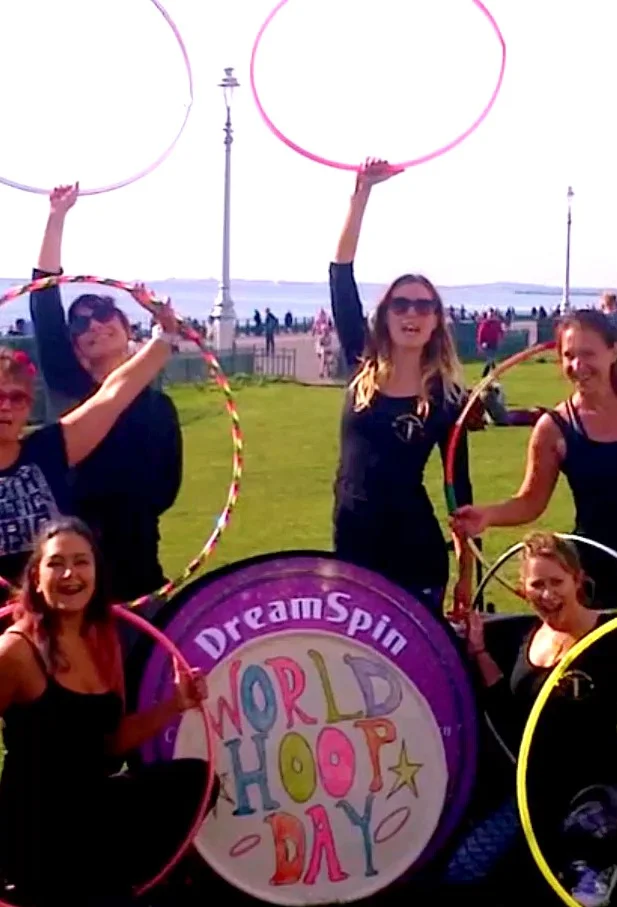
Where to dance:
Dream Spin Hula Hoop Dance Company – beginner, intermediate
Live Love hoop – beginners, intermediate
Hula Hoop isn’t just a great way to remember your childhood, it’s also a fun workout which brings numerous benefits and has a history dating back hundreds of years. A complete core workout, it works as many as 30 of your body muscles. It’s known for improving head-eye coordination and motor skills and improves your spine’s strength and flexibility. It is good for your heart and burns more than 400 calories per hour.
Moves: Head Hooping, Bounce, Chesty Fold, The Archer, Escalator Down, Chest Roll
What to wear: comfortable, tight fitting clothes
Ballroom & Latin
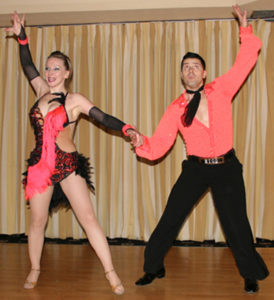
Where to dance:
Brighton Dancing – Ballroom and Latin: Absolute Beginners, Beginners, Improvers, Intermediate, Advanced
There’s five different competitive Ballroom dances and five different Latin dances. Ballroom includes Waltz, Tango, Foxtrot, Viennese Waltz, and Quickstep. Latin includes Cha-Cha, Rumba, Samba, Paso Doble, and Jive. The styles of these dances may vary but the foundation of each dance comes from a very specific and distinct sequence of steps. These couples dances demonstrate poise, power, floor craft and passion.
The Latin dances are very intense, expressive and energetic, while the Ballroom dances are more formal and the partners dance in a closed position.
Cheek2Cheek Gay and Lesbian Dance Club

Where to dance:
Cheek2Cheek Brighton – Intermediate, Beginners, Social
The great thing about Cheek2Cheek is the amount of great social events and that you don’t need a dance partner or any dance experience for the beginner’s class, just lead or follow! After tuition you’ll get the chance to practice what you’ve learned and get more creative with your steps. Cheek2Cheek organises an annual New Year Ball, takes part in the Brighton Pride Parade and regularly takes its members on a trip to the Rivoli Ballroom in London.
Classes for Children
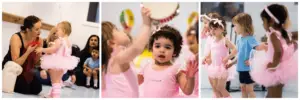
Where:
streetfunk.co.uk/streetfunkbrighton
Most of the above dance styles have classes for kids in Brighton and it couldn’t be a higher recommended activity for little ones. Dancing is known for having many benefits in child development. It’s considered one of the best sports for children, especially for children with ADHD/ADD for they learn how to control their body whilst helping set limits. It aids the development of kinaesthetic intelligence, creates opportunities for self-expression and communication and fosters the ability to better interpret interpersonal nonverbal communication. On top of that, dance education helps students develop physical fitness, appreciation of the body and effective stress management approaches; a great activity for kids to try for all round benefits and, of course, to just have great fun!

Kizomba is missing from this list: https://www.facebook.com/groups/kizombabrighton/ 🙂